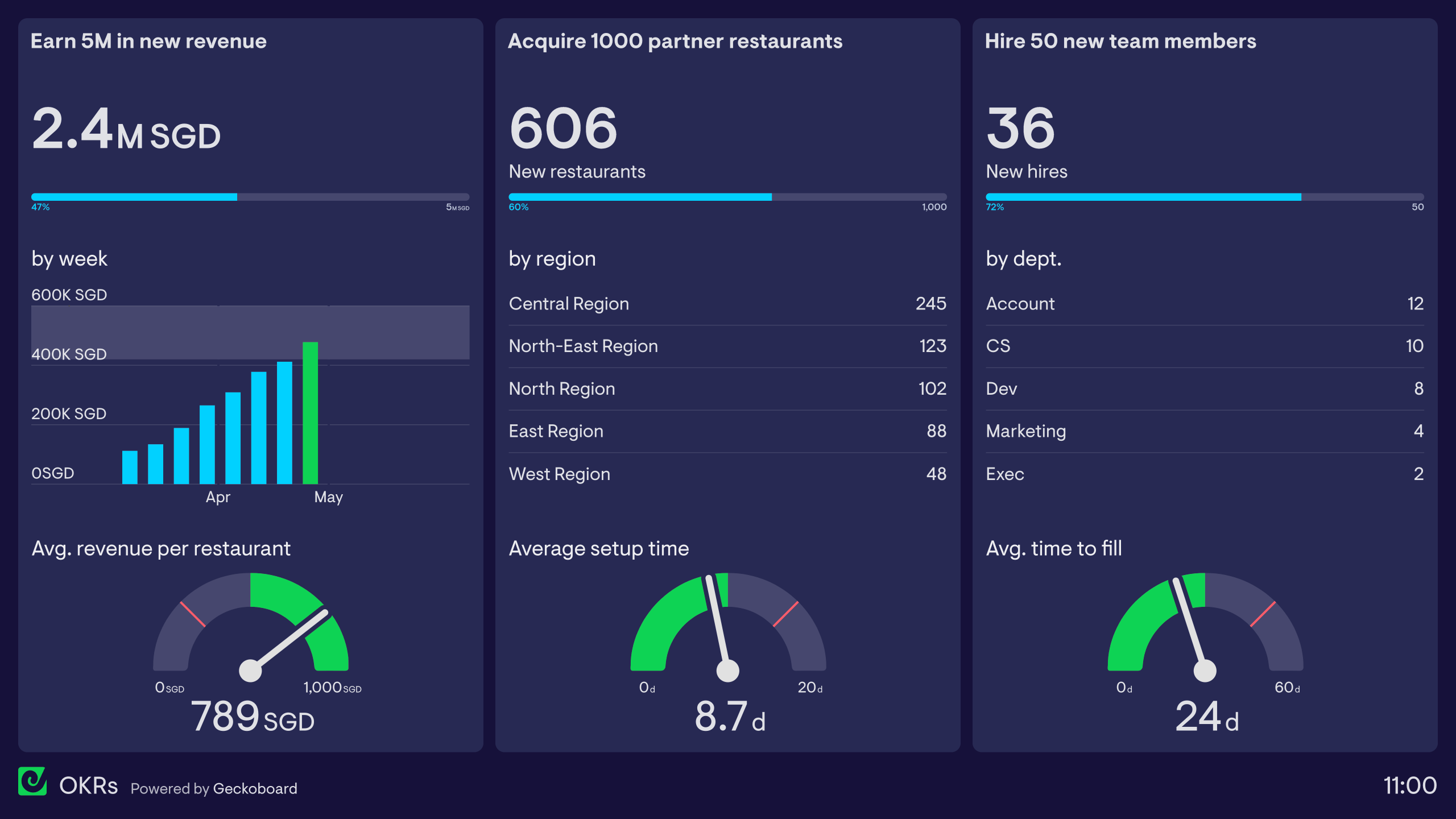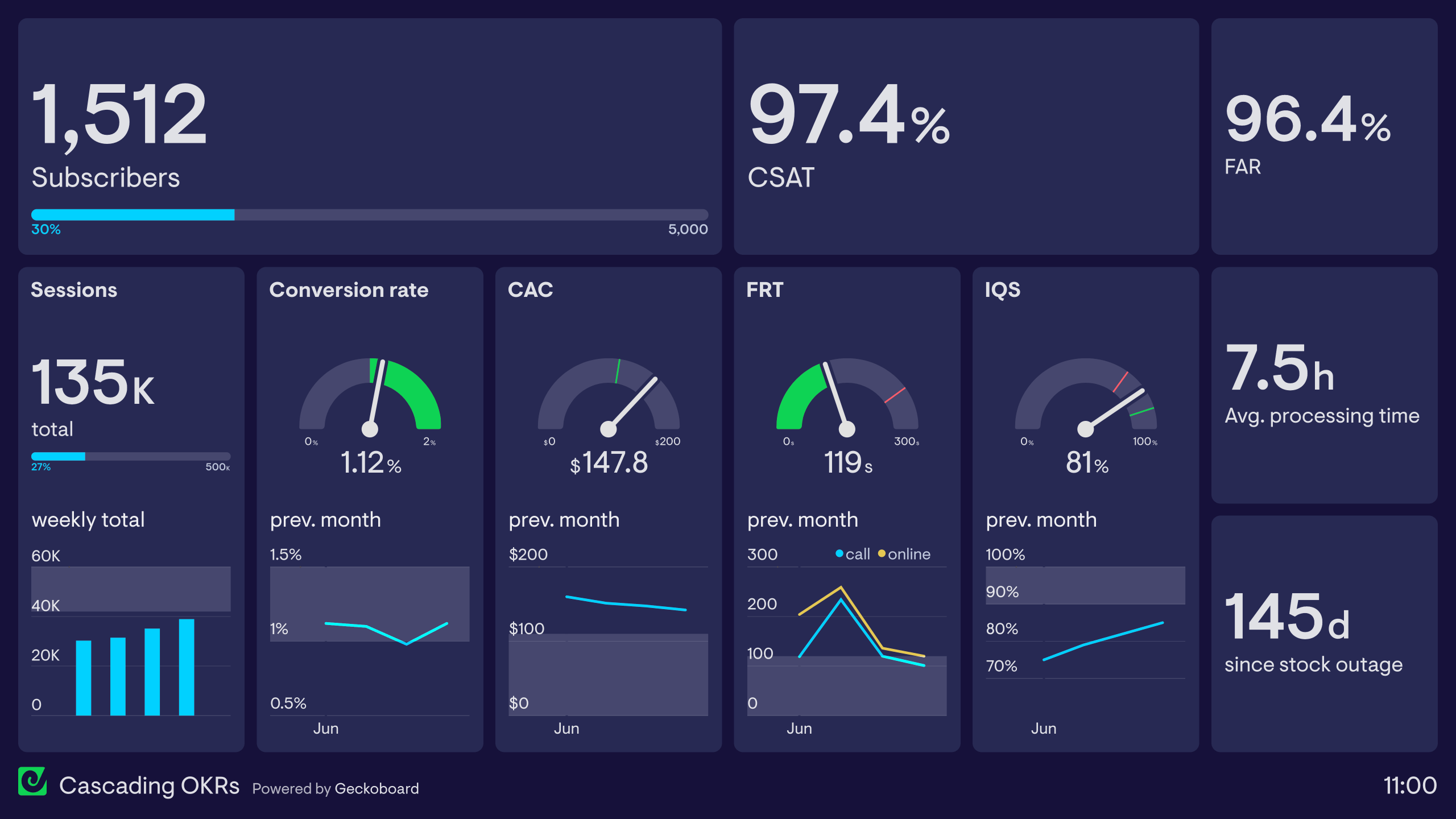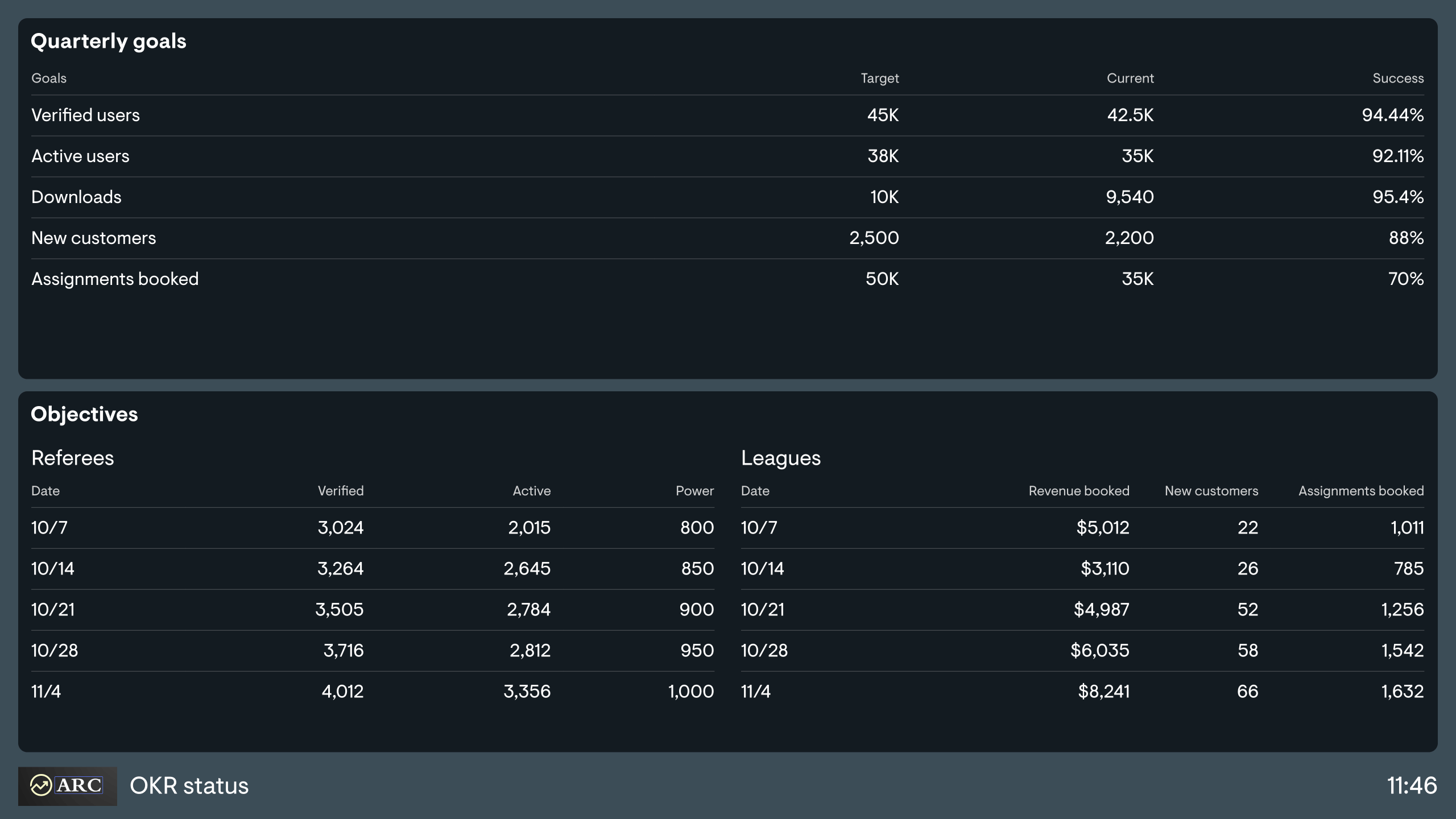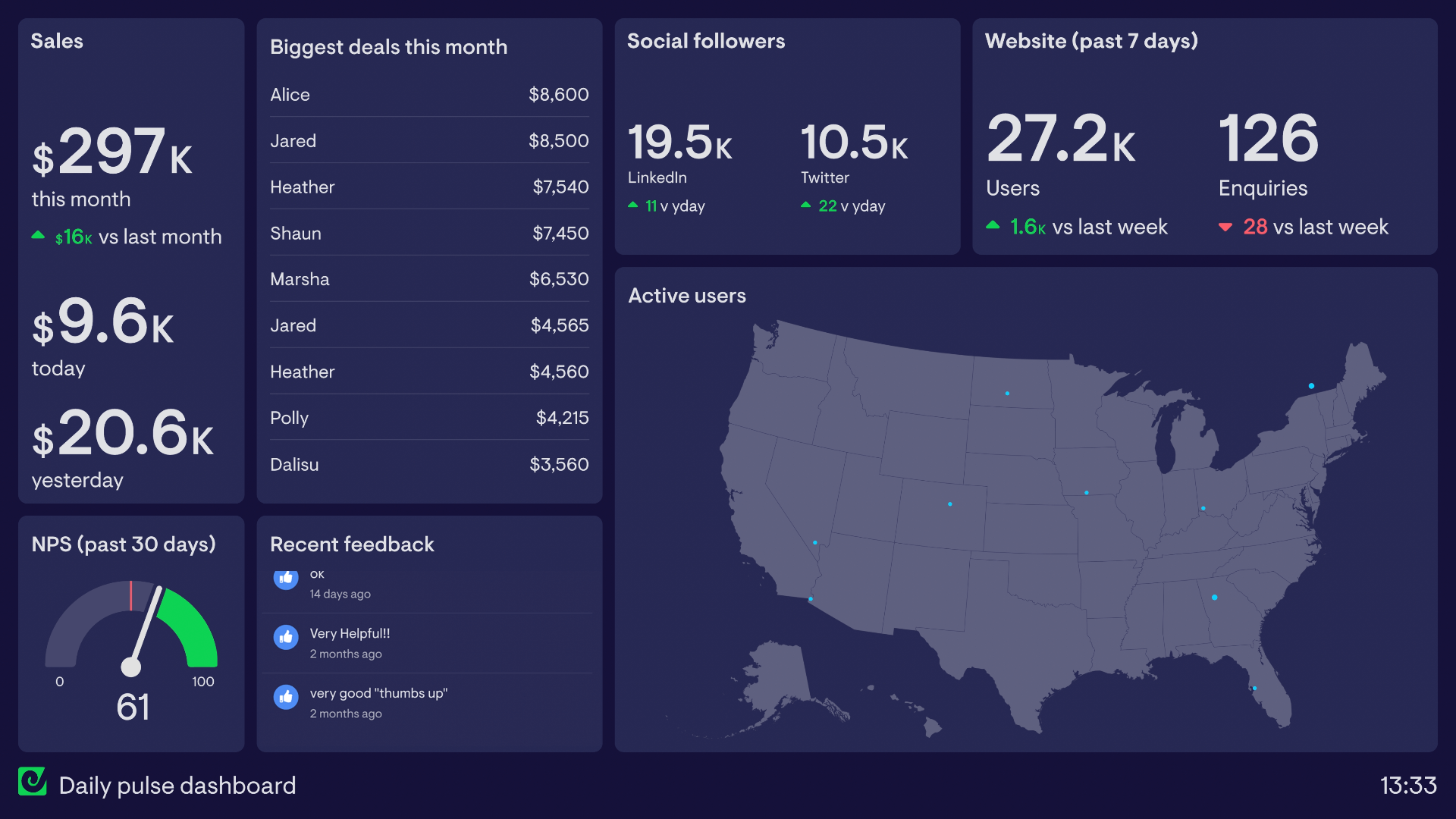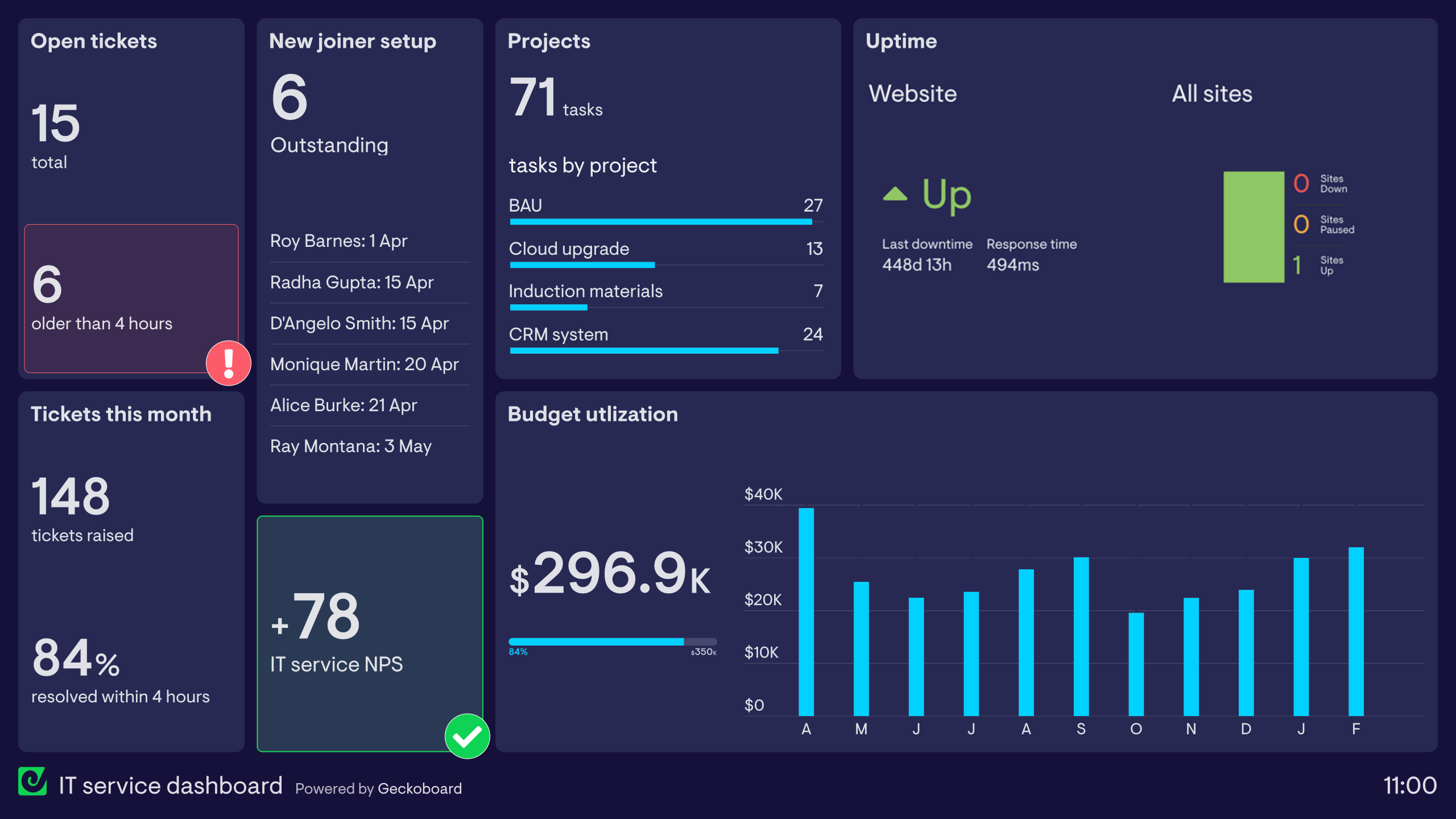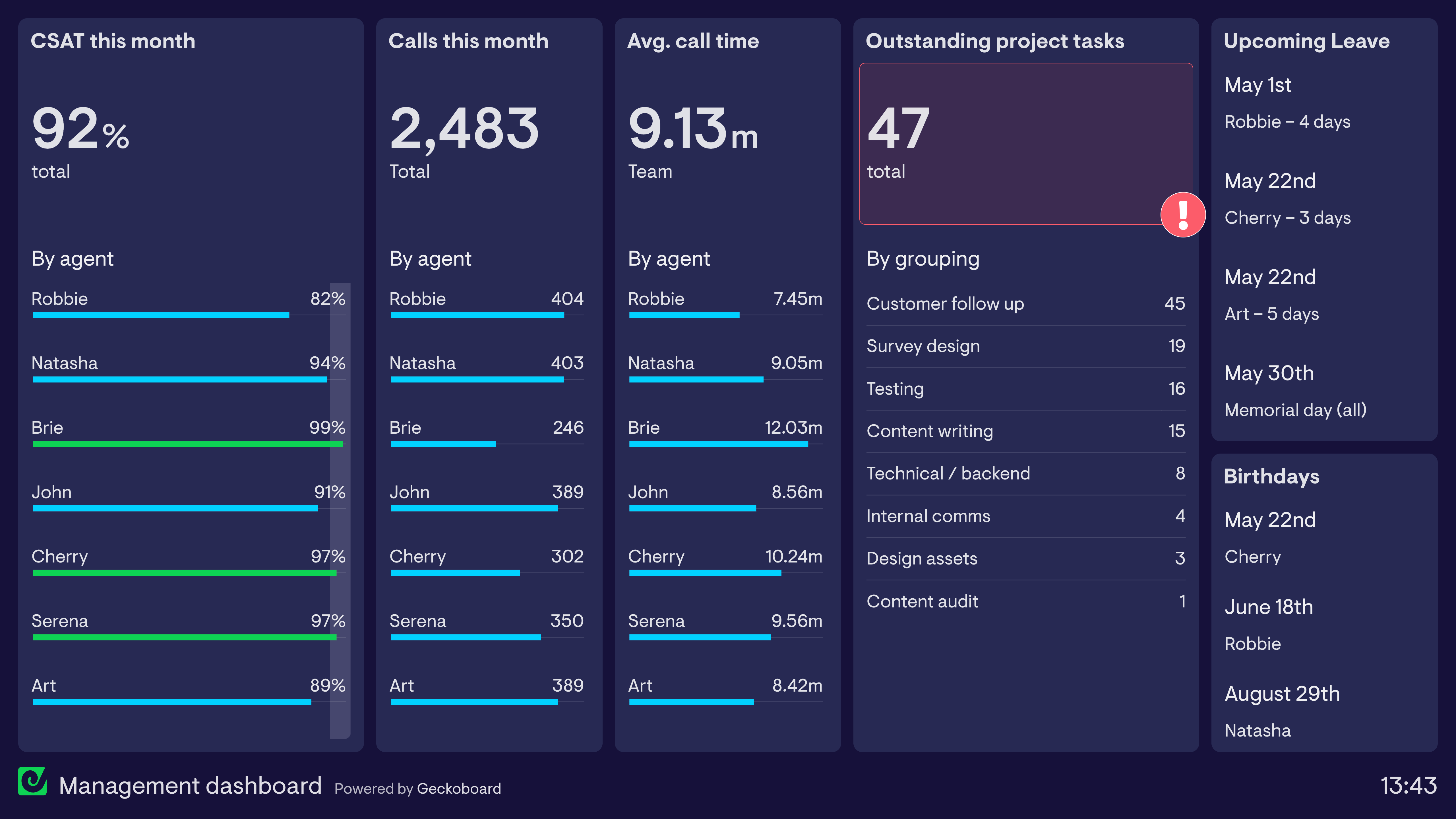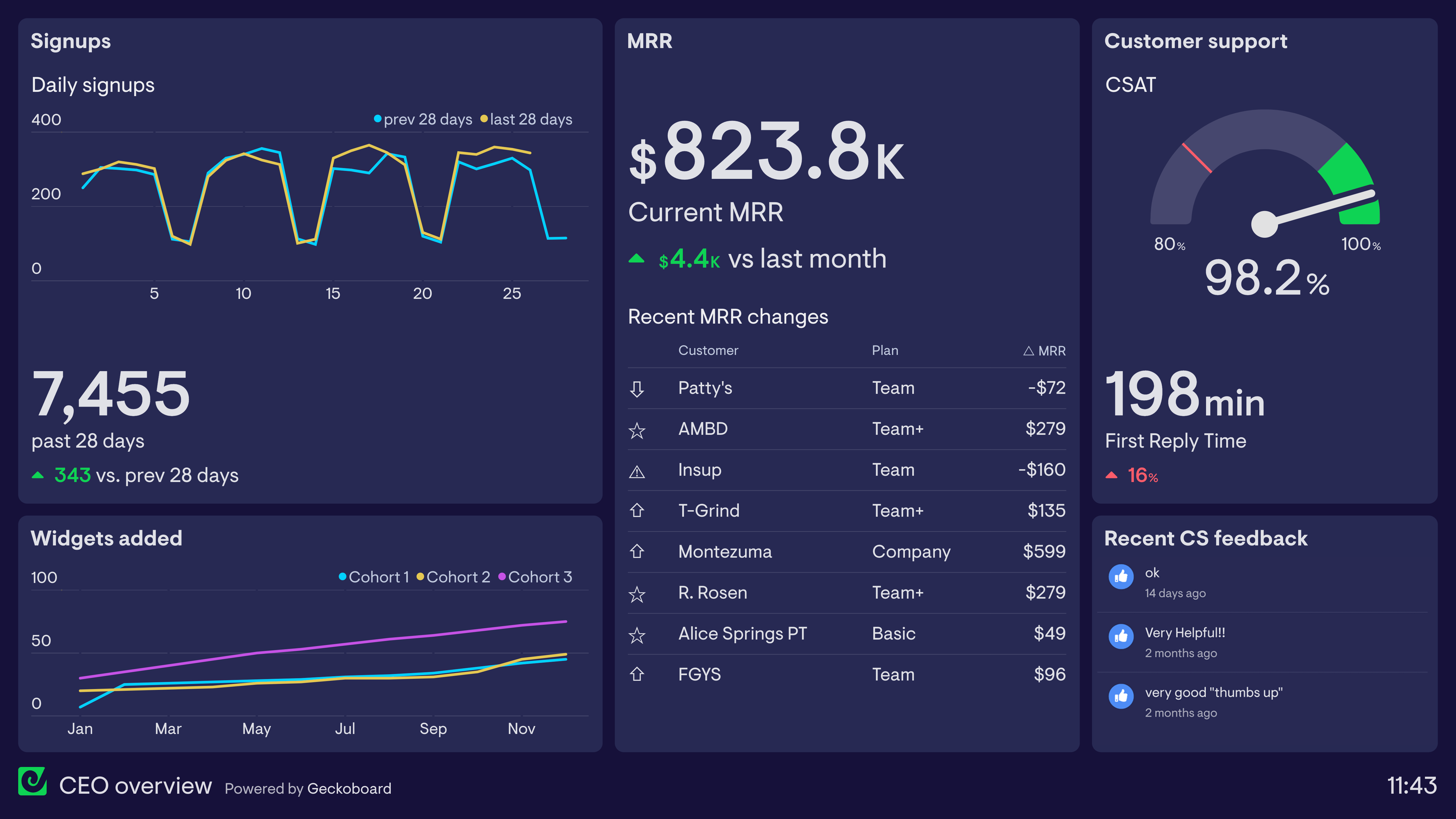What is an OKR dashboard?
OKR dashboards track progress against a type of goal-setting methodology known as OKRs. OKR stands for Objectives and Key Results. OKRs are popular with organizations who favor an agile-style approach to work, perhaps most famously, Google.
You can learn more about OKRs here. However, the basic principle behind an OKR is that you set one, high-level Objective, along with 3-5 supporting Key Results. These Key Results need to be measurable. OKRs are designed to make sure you stay focused on your overall goals, but also that you have a robust way of measuring to what extent you have achieved them.
OKR dashboards are therefore useful in a number of ways. They keep the entire team focused on the OKRs because they are constantly visible. They also provide a clear way of showing whether or not you are making progress towards achieving OKRs. This feedback loop can cause teams to quickly evaluate (and re-evaluate) whether or not their current actions are sufficient and, if necessary, change their approach.
Examples of OKR dashboards
OKR dashboard
This OKR dashboard has been designed by a restaurant booking company, which is setting up operations in Singapore. The company is planning ambitious growth in the city, and this quarter has written the following OKR:
Objective: become the third-biggest restaurant booking app in Singapore.
- Key Result: Earn 5 million SGD in new revenue
- Key Result: Acquire 1000 new partner restaurants
- Key Result: Hire 50 new team members
As you can see, the three sections of the dashboard visualize metrics related to the three Key Results. This includes their ultimate progress toward each ‘Result’ but also includes some related KPIs that help the team to put their numbers in context. By monitoring metrics holistically, they can better judge whether or not they are on track.
Focus area
OKR progress
Who looks at it?
Entire team
How often?
Several times a week
- MixpanelSpreadsheetsSQL DatabaseProfitWell
Cascading OKRs
Often, companies who adopt OKRs choose to set them at multiple levels. This means not just setting OKRs at an organizational level, but also at a team level and individual level too. The general principle is that OKRs should support and feed into higher-level OKRs. This ensures that the entire company is aligned and everyone is pulling in the same direction.
This dashboard contains different Key Results from OKRs set in the Marketing team, Customer Support team and Operations team.
The Marketing Key Results can be seen on the left-hand side of the dashboard. These are primarily concerned with Customer Acquisition, Customer Acquisition Cost (CAC) and New Subscribers. The Customer Support Key Results can be seen in the center-right section of the dashboard. These track Customer Satisfaction (CSAT), First Response Time (FRT) and IQS (Internal Quality Score). Finally, on the right-hand side, we can see the Operations team’s Key Results which relate to Fulfillment Accuracy Rate (FAR), Processing Time and reducing stock outages.
Focus area
Key Results for Marketing, CS and Ops
Who looks at it?
Everyone
How often?
Every day
- Google AnalyticsZendesk SupportMixpanel
OKR status
This dashboard represents a simpler way of visualizing OKRs. The team has set five Key Results, with progress updated each week. This progress is recorded by the team leader in a spreadsheet .
He has chosen to visualize this information with a dashboard so it is more visible to team members (who would not otherwise open up a spreadsheet file) and therefore becomes top of mind. The dashboard is referenced each week during team standup meetings.
Focus area
Weekly OKR progress
Who look at it?
Sales and Marketing team
How often?
Every week
- SpreadsheetsGoogle SheetsExcel
